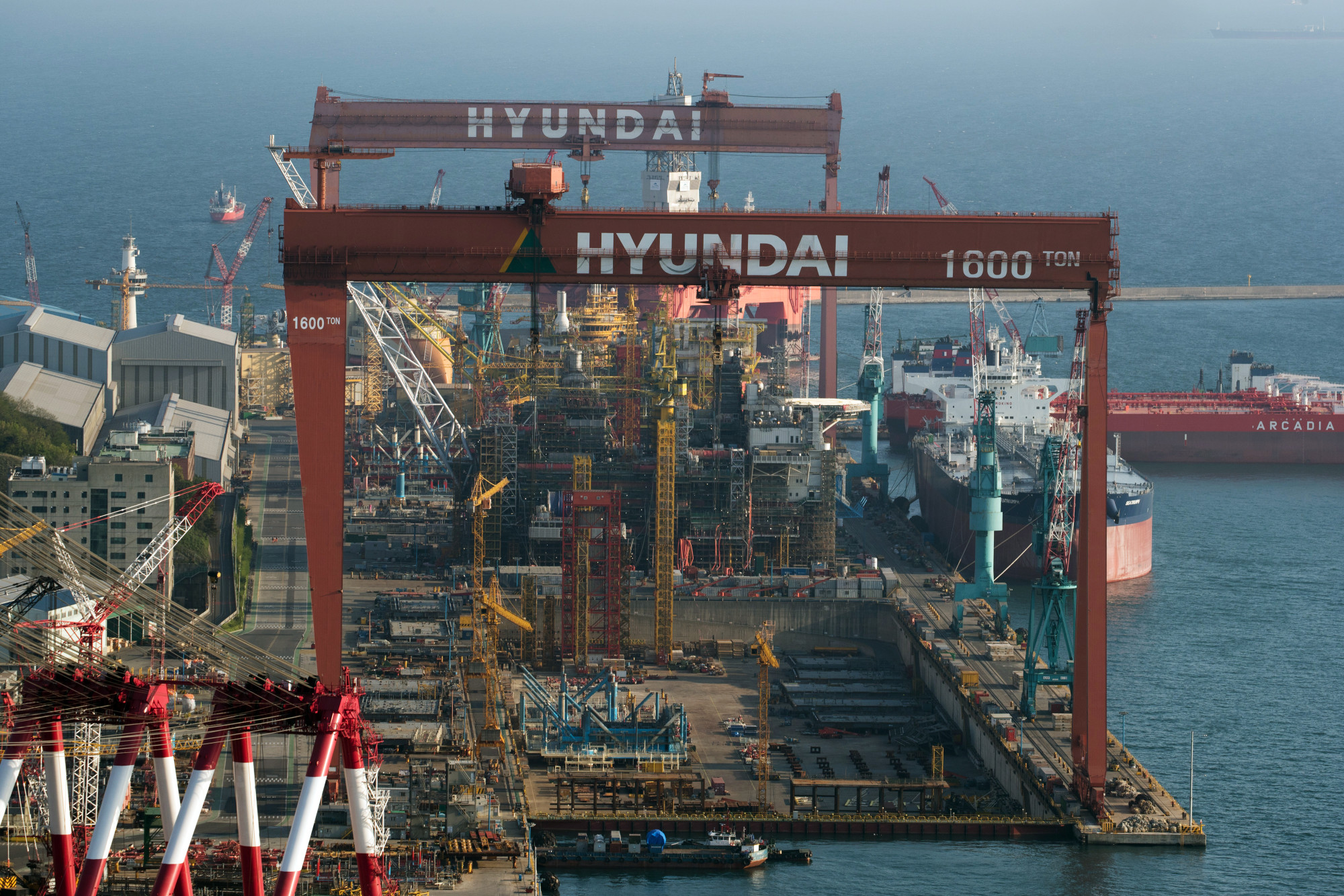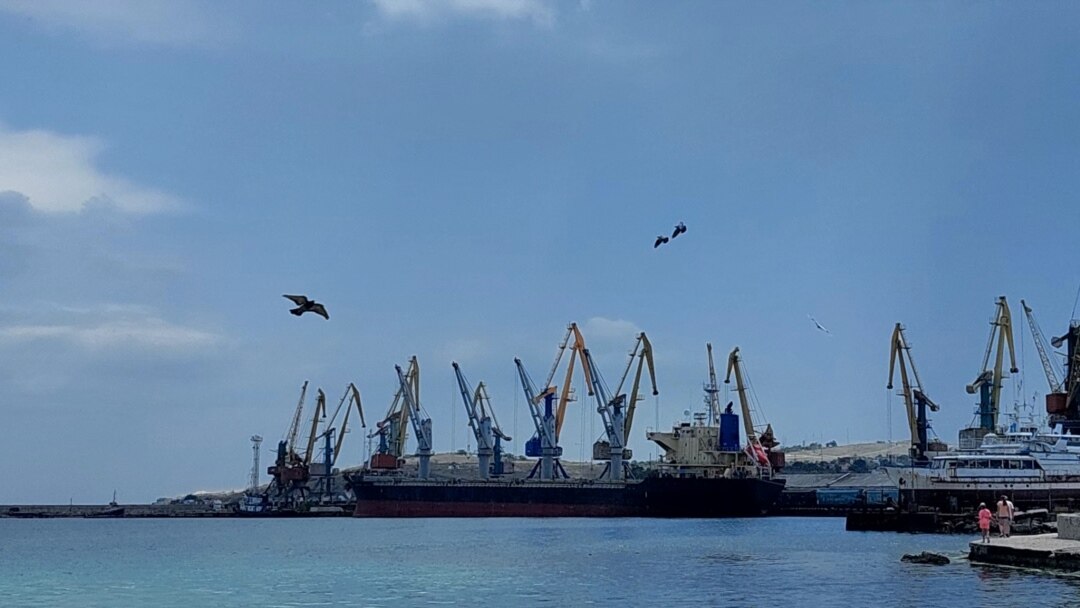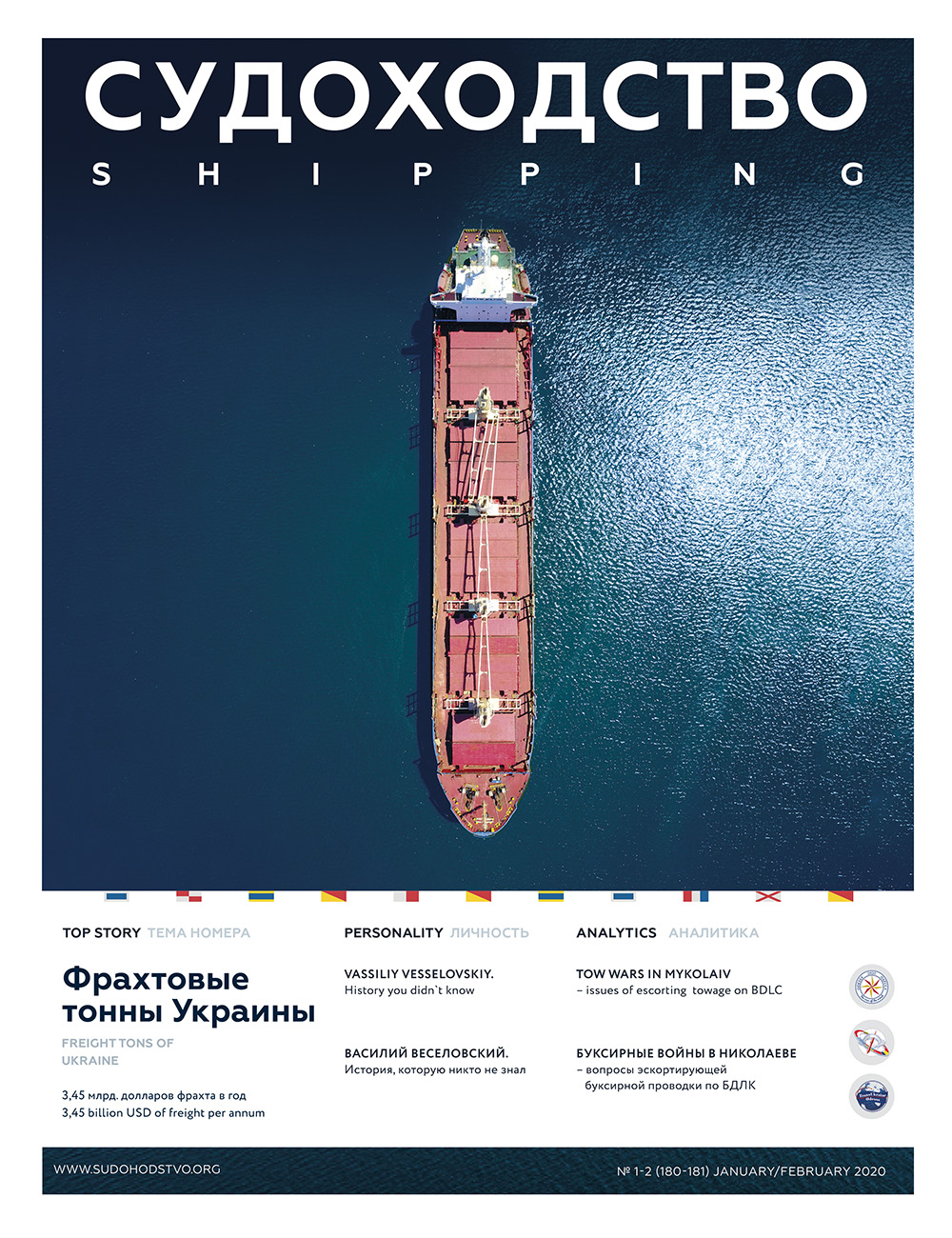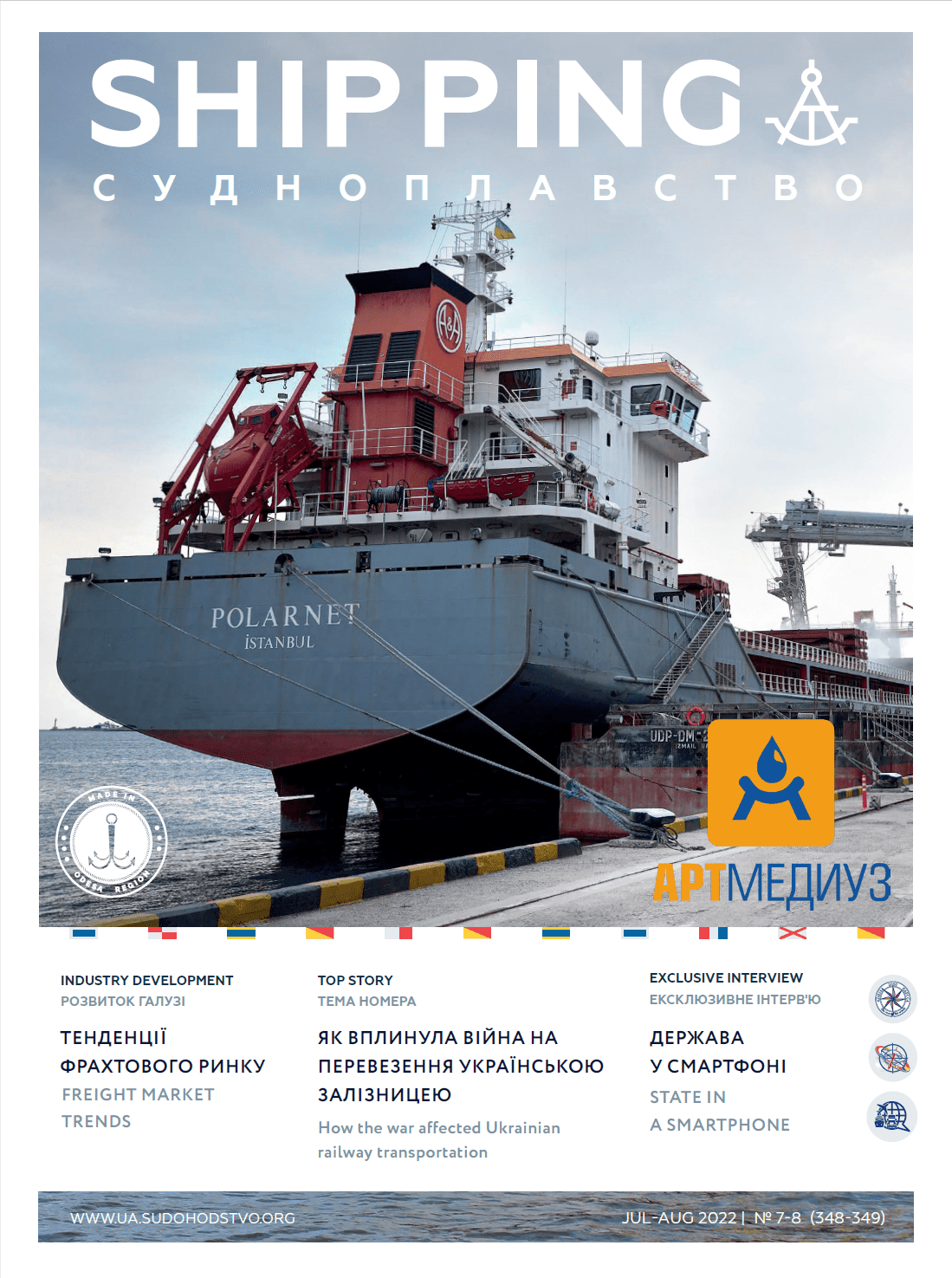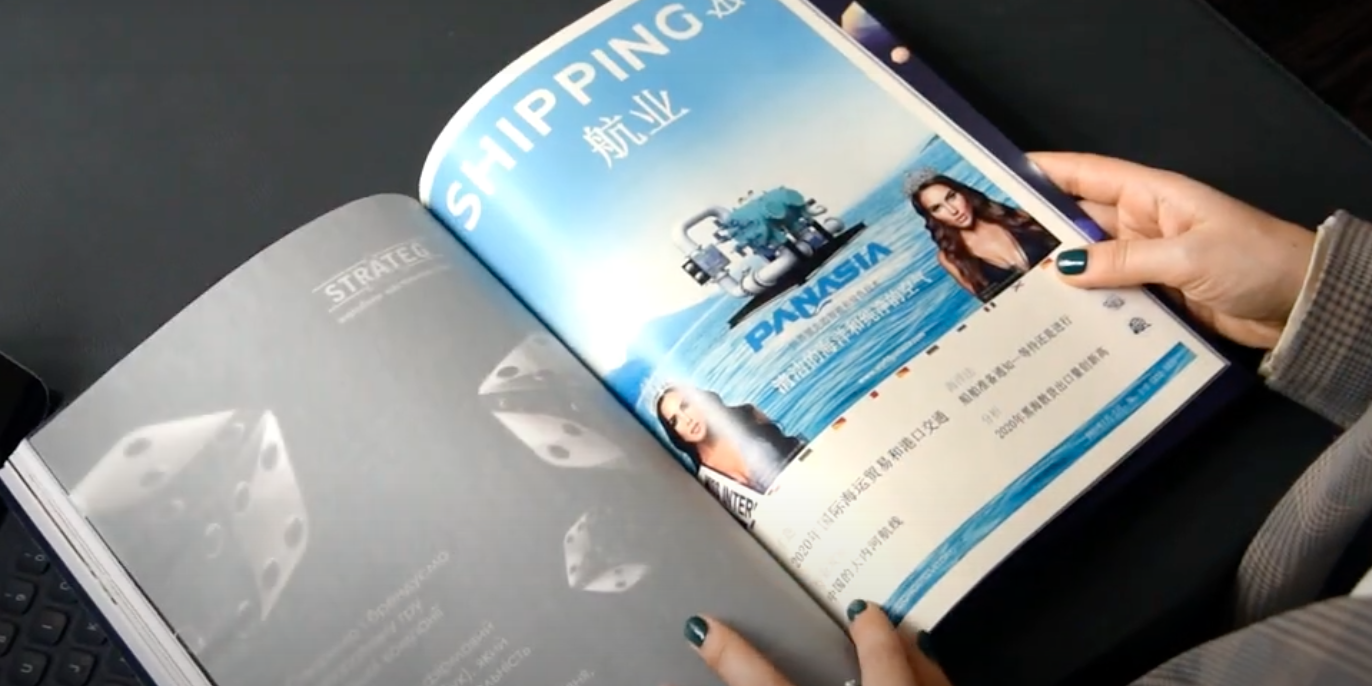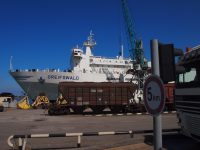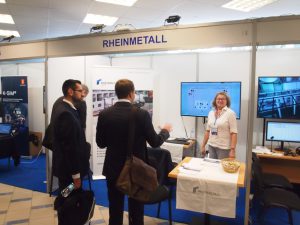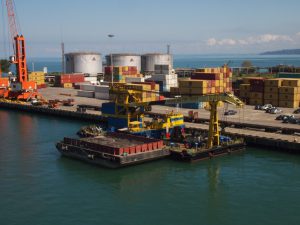Valery Voinychenko,
Freight News Reporter, Ph.D. in Economics
The third final part of the overview dedicated to the problem of fundraising for constructing new or procuring second-hand ships of the cargo fleet is about the leasing that has become one of the leading forms of funding in the global shipping for the last years. As noted in the previous overviews, the bank sector showed this tendency to reduce the provision of finance for shipping, predominantly in Europe, after the global crisis in 2009. At the same time, the share of the Asian, mainly Chinese, banks grows constantly. According to the specific estimations, China spent 20 bln US Dollars for funding according to the outcomes in 2017, what was by 33% more than in 2016.
Growing Role of China
According to the figures provided by Marine Money, the Chinese banks, such as ICBC, China Minsheng Banking Corp., Bank of Communications and China Merchants Bank has about the fourth of the global sector of funding of the shipping industry, which is evaluated in 200 bln US Dollars. That is to say, the PRC share has not less than 50 bln USD. As far back as 2010, China opened a credit line in the size of 5 bln USD for the Greek ship-owners through its national Exim Bank and China Development Bank (CDB) for constructing ships at the RPC shipyards. Many Greek ship-owners used this opportunity too by taking into consideration lower prices of new-built ships in comparison with the Japanese and South Korean prices and already-present and relatively cheap financing. Due to this, the Greek ship-owners ordered 142 new ships at the Chinese shipyards by May 2013. In particular, just the shipbuilding program of the Greek company «Costamare»done at the RPC shipyards made circa 1.5 bln USD. The loan book of Exim Bank for the fleet construction increased to 13 bln USD. In a point of fact, loans given by Exim Bank for the fleet construction at the Chinese shipyards became a definite form of the export funding.
In 2014, China gave a loan with a limit of 1.2 bln USD to such German companies as Peter Dohle and Bernard Schulte for purchasing ships built in China. These funds were allocated out of the special fund with a limit of 5 bln USD founded for the German ship-owners, i.e. in the same volume as for the Greek ship-owners, as mentioned before.
Sure thing, the Chinese shipping sector was not ignored either. In 2014, COSCO GROUPE signed an agreement with China Development Bank for getting loan funds of up to 8 bln US Dollars during 5 years with the designated purpose to expand the fleet of the Chinese shipping giant. A year before this, CDB opened in Dalyan a financial sector specialised in shipping, promising to provide the sector with loans of 26 bln USD, whereof 13.1 bln USD had been granted already. In 2017, national Exim Bank in the RPC funded the shipping industry with 4.0 bln USD, and CDB Bank — 1.4 bln USD. The lion`s share of these funds was used for financing the construction of cargo vessels at the Chinese shipyards under the contracts signed with the domestic and foreign customers. Other 300 mln USD were invested by the Chinese commercial banks for constructing the fleet in 2017. In late 2017, the loan book of China Exim Bank was about 4 bln USD just for COSCO Shipping only, and 1.5 bln USD for CMA CGM.
Over recent years, the leasing scheme, which gives an opportunity to finance 85% of the cost of construction of a new ship with 5.5% per annum, has become highly popular in the RPC. Presently, such three top leasing companies in the RPC as ICBC Financial Leasing Co., Minsheng Financial Leasing Co. (MFL) and Bank of Communications Financial Leasing Co. have the cargo fleet of 890 ships with the total cost of 23.6 bln USD. Herewith, the loan book of MFL has doubled in size for the last 3 years and made 6 bln USD, whereas the loan book of ICBC, which was 600 mln USD in 2009, has reached 10 bln USD today.
Number of cargo vessels in the loan portfolio of the top-five of leasing companies in the RPC
*in June 2017 Source: Marine Money 2017
According to the statistics of China Banking Regulatory Commission, 989 cargo ships were in the loan portfolio of 26 companies dealing with the shipping financial leasing in March 2017, i.e. the share of the first three is 90% that shows a very high level of the capital concentration.
According to the figures provided by Clarksons Research, 2014 became super successful for the Chinese leasing companies, when they funded the construction of 4 mln GRT cargo vessels plus allocated money for procuring another million of GRT at the second-hand vehicle market. Herewith, the Chinese leasing share in gross tonnage of reordered and second-hand cargo ships was equal to 30% of the global market. In general, in September 2016 50% of funds granted by the Chinese leasing companies were for the container fleet, 43% were for bulk carriers, and other 70% were for other types of cargo vessels (tankers, etc.)
Shipping loan portfolio of the top leasing companies in the RPC in 2017
Source: Bank of Communications
Structure of the shipping loan portfolio of ICBC Leasing according to the types of vessels in value terms in 2017
Source: ICBC Leasing
During 2013-2015, the Chinese leasing companies were enlarging the fleet based on their balance by 3.4 mln GRT on average every year. Herewith, Bocom Leasing and Minsheng Leasing cut a dash with contracts about the construction of mega container carriers for MSC and CMA CGM, whereas ICBC Financial Leasing was spotted with orders for the world largest oar carriers with the deadweight of 400 thou t, VLOC class, for the Brazilian mining giant «VALE».
The first Chinese leasing company, China Oriental Leasing, was founded as far back as 1981; and as soon as in 2012 the RPC had about 400 similar companies, the portfolio of which comprised contracts with the total value of 205.6 bln USD. In 2018, just the top five Chinese financial institutes, including three banks and two leasing companies, spent over 2 bln USD for shipping projects at the second-hand ship market. 73 ships acquired for this money included traditional bulk carriers, container carriers and tankers as well as 2 LNG gas carriers purchased by Bank of Communications for 379 mln US Dollars.
Costs of 5 Chinese financial institutes for cargo ships in 2018
|
Financial institutes |
Number of vessels, pcs |
Scope of finance, mln USD |
|
Bank of Communications |
13 |
603 |
|
China Development Bank |
16 |
393 |
|
Minsheng Financial Leasing |
21 |
388 |
|
China Merchants Bank |
13 |
367 |
|
Avic Leasing |
10 |
295 |
|
TOTAL |
73 |
2046 |
Source:Vessels Value
During 2016-2017, ICBC Financial Leasing spent 10 bln USD for each new project annually. At this, the project of just one BP Shipping had more than 1 bln USD allocated in October 2017. The dizzying growth rates of the portfolio of shipping projects belonged to ICBC Financial Leasing among the Chinese leasing companies in 2018. It increased its investments by 3.2 bln USD or 45% as compared with a year before. CDB Leasing and AVIC Leasing also had quite dramatic growth rates of funding of the shipping sector in 2018. In total, according to the figures provided by Lloyd`s List, the shipping loan portfolio of the Chinese leasing companies reached 51.3 bln USD late in 2018, what was by 9% higher than the figures in 2017.
Overall, there were 8218 companies dealing with the financial leasing with the composite portfolio of operations in the size of 5.6 trillion CYN by the middle of 2017. As compared with the end of 2016, their number enlarged by 8 times, and the scope of operations enlarged by 2.7 times. At this, the leading role in the gross scope of operations is played by the leasing companies founded under the large RPC banks, which had about 40% of funds allocated for.
Examples of leasing deals and transactions
Most of leasing transactions in the shipping sector are related to this so-called leaseback in the last few years. It is also worth noting that the Chinese leasing companies widely use not just this leaseback scheme, but the scheme of traditional financial and operational leasing. In leasebacks, the shipping company sells its ship to some leasing company, and then takes it as bareboat charter for 5-7 years with a liability to reacquire it then. This scheme is interesting for ship-owners as it immediately gives great fresh cash influx used for refinancing (if a sold ship had encumbrances), contributions as some own «equity»(when ordering new vessels) or just for funds added to current assets for covering debts accumulated. Leasing companies have a commercial interest only – to get a stable income with quite a high rate of return.
One of the latest examples of this scheme applied is a deal by and between the tanker ship-owner «TOP SHIPS»and one of the Chinese leasing companies. According to its terms, TOP SHIPS shall sell two tankers built by Hyndai Sambo Heavy Industries (bodies No. 874 and 875) to the leasing company for 92.5 mln USD by putting them into service (April and May 2019). This agreement stipulates the financing before and after supplies, and is intended to last 7 years. However, TOP SHIPS has a right to buy them out earlier than expected in 3 years after their actual delivery. We should remind you that TOP SHIPS sold its 13 tankers at once for 550 mln USD according to the similar leaseback scheme as far back as 2006.
The leaseback scheme was also used by Maersk Product Tankers for tankers-product carrier ships constructed in 2015-2016. Industrial and Commercial Bank of China acts as a lessor, which firstly procures ships and then returns them to Maersk Product Tankers for 10-years` bareboat charter with a right to reacquire these vessels during this period.
When concluding a leasing deal with the high-class Japanese financial institute, another tanker carrier, Ardmore Shipping, stipulated its maximum completion term of 11 years with a right to reacquire the object of leasing at earlier stages of the project. A tanker-product carrier ship Admore Engineer, 50 000 t DWT, constructed in 2014, was this object of leasing in this case.
In the container shipping sector, MSC financed the construction of six mega container carriers of 22 00 TEUs through a leasing deal concluded with CMB Financial Leasing and Doun Kisen. And Ship Finanance International got its leasing finances under quite favourable conditions. These finances were equal to 840 mln in total for constructing 8 container carriers with the cost of 105 mln USD per one.
One of the latest examples of leasebacks in the bulker sector is a deal signed by and between Scorpio Bulkers with CMB Financial Leasing there again. According to the terms of this deal, Scorpio Bulkers sells its 4 Kamsarmax ships and 3 Ultramax ships to the leasing company with their further bareboat chartering for up to 7 years. In doing so, about 4/5 of the proceeds gained from the sale of these ships shall go for refinancing the current obligations, and 1/5 shall go for installing scrubbers so to meet the conventional requirements IMO 2020. We can add thereto, another largest bulk carrier, OLENDORF, entered into 23 leasing agreements in 2018, among which were 6 agreements for Capesize ships (both operating ones and ones built), 4 Kamsarmax ships (with their delivery in 2020) and 13 Supramax ships. Herewith, the leaseback scheme is specified for the first two categories of bulk carriers under the conditions «5 + 2 + 1 year».
It is gratifying that Europe becomes interested in leasing as well. For instance, the ship-building group «DAMEN Shipyards»arranged a new leasing fund in 2018, which is designated for construction of fishing vessels by the African ship-owners in terms of the program «Africa Ship Leasing»supported by some first-class banks of Holland. This program has already been helping some African ship-owners, in particular, from Nigeria and Angola. Before this, DAMEN group, having constructed about 1200 vessels for its customers in recent years, applied the scheme of simple loan financing. According to this scheme, clients firstly acted as ship charterers for a certain number of years, during which loans and interests under it were to be paid back. Then clients were provided with an opportunity to purchase a ship during the period of validity of the agreement signed provided that they should meet respective commitments after the paying-back period.
Conclusion
To sum up the information given in this and previous articles dedicated to the problems of funds allocated to the shipping industry, we can make the following main conclusions:
– in the course of the shipping market recovery from the consequences of the global financial crisis, the cost of assets is growing, and risks in investing money to ships are reducing conversely. Respectively, bank loans for the shipping industry will be increasing gradually, although no one is likely to come back to the previous volumes. For instance, Hamburg Commercial Bank (HCOB), known before as HSH Nordbank, allocated about 1 bln USD (circa 25 mln for one project), by reducing it to 5.82 mln USD, for financing the portfolio of 40 shipping projects in 2018. We should remind you that the shipping loan portfolio of HSH Nordbank made over 40 bln USD in 2008, i.e. it was almost 7 times bigger;
– regular (medium-sized or large) customers with a good loan history, quite a positive cash inflow, strong business for the last time and with a not less than 40-50% participatory interest in the project of their own funds. You can count on really nothing without fulfilling all these terms (e.g. for a small company-greenborn) for getting a loan to procure the fleet (with a serious bank, in any case);
– loans given by the financing banks for medium-sized customers to procure ships generally have a limit of 20-25 mln USD, for large customers – 200-300 mln USD (syndicated loan). For example, such famous financial institutes as Citigroup Global Markets, Citibank N.A., Wells Fargo Bank, Bank of Monreal, BNP Paribas, National Australia Bank, Societe Generale, Bank Sinopac, ABN AMRO, Bank of America, Canadian Imperial bank of Commerce, Canadian western Bank, CTCB Bank, JPMorgan Chase Bank and Coast Capital Savings federal Credit Union are members of the bank financing program of Seaspan of 1 bln USD with a possibility to raise this limit to 2 bln USD;
– the most acceptable bank financing objects are cargo ships with the size not less than Handysize vessles and age of up to 5 years (but not over 10 years anyway).
– the financial leasing will still have a growing role in the procurement of marine cargo vessels (the same as it was in the aviation, expensive segments of equipment and automobile business);
– if to compare the shipping loan portfolio of the top RPC leasing companies (51.3 bln USD) with the global volume of operations in the area of financial leasing in 2017 (633.7 bln USD), it is less than 10%. Herewith, it is predicted that the volume of leasing operations throughout the world will increase by 5.81% every year and go beyond 1 trillion USD. In Industry Reports 2019, where the abovementioned information was taken from, the number of the largest global leasing financial institutes includes HSBC Bank, Sumitomo Mitsui Finance and Leasing, BNP Paribas Leasing Solutions, Wells Fargo Equipment Finance and Banc of America Leasing&Capital, LLC, JP Morgan Chase, which any Chinese companies has not been among so far. But it is just a matter of time, and right the shipping market may let the Chinese financial leasing eventually enter the club of major league players of this business. Anyway, the Chinese companies have already had top positions in the shipping leasing;
– thanks to the governmental financial aid and regulatory tax and tariff measures, the Chinese leasing sector has been created literally from the scratch for the last ten-twelve years and turned into the second largest market in the world. An especially strong effect was caused to the shipping sector where the Chinese leasing companies took leading positions. Besides the Chinese leasing companies playing the main role in this type of services, the Japanese and South Korean financial institutes are active players in this business area as well. Herewith, if to speak about South Korea, here leasing companies, as in China, often rely on some governmental aid.
–however, no matter how much leasing schemes and patterns could be attractive, they are not appropriate for middle-sized and certainly small ship-owners as the latter ones are just not interesting if to speak about transactions in an amount of dozens and hundreds of millions US Dollars. Correspondingly, middle-sized and small ship-owners have to count on their own financial resources that are definitely not enough in view of the charter market status in recent years, or to look for sources alternative to the bank funding and leasing. As a rule, such sources are private, pension or insurance funds, public subsidized (where possible) and mixed forms. By taking into account that the total volume of funds allocated for the shipping industry by leasing companies suppressed the limit of 50 bln USD. Generally, leasing companies do not waste themselves on small customers and tiny projects. Furthermore, the execution of leasing deals, transactions takes quite a long time;
–in the climate of this uncertainty in the freight conjuncture development and a relatively low cost of shipping assets, you cannot count on the IPO market or private investment foundations to be seriously involved in funding the shipping. This prevailing drop of stock prices of most shipping companies at global stock exchanges is still a usual phenomenon.
Well, here is the most important. Even with the most attractive and concessionary financing, ship-owners should always remember about this fundamental and key market strategy factor: to keep the balance of demand and supply. This blind belief in the coming glut, like it was in the middle of 2000s, caused the shipping sector to have a chronical misbalance of demand and supply during the last 10 years. The tonnage overstock was ultimately caused by shambolic mass orders for bulk carriers in 2007-2008 (before the market crash) made by riding the wave of freight euphoria, when it seemed to be so forever. Doubtful capitals, ignored risks, funds contributed to unreasoned investments (to a definitely overstocking fleet in our case) led to the longstanding shipping unprofitability. And speculative orders made by private foundations in 2013-2014 for new-built ships set aside hopes about the full-fledged freight market recovery in the years ahead. That is why we have these difficulties today to get some funding for ship-building programs and need considered steps in this direction.
Based on the materials of the maritime periodicals

